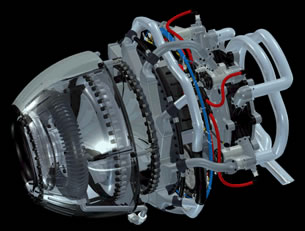Latest News
July 30, 2008
By Margaret S. Gurney
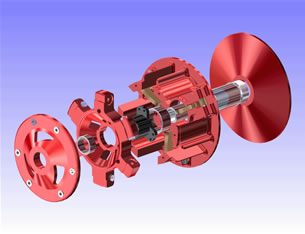 Image courtesy of Kubotek. |
To drive CAD/CAM/CAE innovation onward, Spatial Corp.‘s (Broomfield, CO) Release 19 (R19) of its 3D ACIS Modeler and 3D InterOp Suite support process automation through enhanced CAD translation. The company says that users gain greater CAD interoperability as well as benefit from Spatial’s Product Documentation, which is available in an open, Wiki-format. This customer-centric approach for online documentation offers full access to technical information, and invites users to contribute their ideas, which Spatial says could influence further product development.
“R19 strengthens Spatial’s technology offering in the traditional CAD/CAM/CAE markets,” stated John Alpine, Spatial VP of Research and Development (R&D). “These customers drive our development efforts in emerging areas such as geometry editing. R19 also delivers on our commitment to enhance CAD interoperability. Since we provide the 3D InterOp and 3D ACIS Modeler, Spatial is uniquely positioned to address translation issues with CAD applications.”
| “InterOp in R19 demonstrates our commitment to providing the highest-quality B-rep translators available, and our market leadership in providing semantic PMI translation to support process automation.” —Ray Bagley, Director, Product Planning & Management, Spatial Corp. |
3D Modeler Advancements
R19 provides the foundation for the recently introduced industry-targeted components—EDA (electronic design automation) 3D Analysis Suite for accelerating development of 3D analysis tools in EDA applications, and 3D Springback for the pressed metal-tooling industry—and includes additional large radius blending support, improved feature retention during modifications, more agile local operations (LOPs) handling with increased performance, sheet body offset function, new APIs for improved workflows, expanded “tolerant-hot” Boolean capabilities for improved handling of imported data, 3D edge offset for CMM (coordinate measuring machine) applications, and fixed-axis sweep option to simulate 2.5-axis milling paths in CAM applications. Plus, ACIS R19 is supported on a variety of 32- and 64-bit platforms.
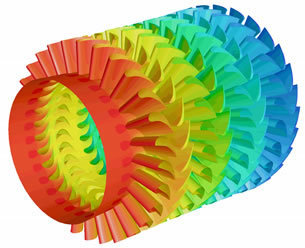 Image courtesy of Fluent. |
Even before this release, Spatial says the 3D ACIS Modeler (ACIS) offered an open, object-oriented C++ architecture that enabled 3D modeling capabilities. Suited for developing applications with hybrid modeling features, since it integrates wireframe, surface, and solid modeling functionality with manifold and non-manifold topology, and offering geometric operations, ACIS is the geometry kernel used in more than 350 customer applications with more than 1.5 million seats worldwide.
ACIS provides a base of 3D modeling functionality, plus flexibility to meet individual application requirements, and it includes ACIS extensions for specific application needs including hidden line removal, deformable modeling, advanced covering, and defeaturing.
Expanded 3D CAD Interoperability
Since the previously released version, the 3D InterOp Suite has added two new products, New CAD Support (via Generic Inventor Reader and Generic SolidWorks Reader) and advanced CAD interoperability with SolidWorks 2008 files, Inventor 11 assembly files, Parasolid 20.0 files, CATIA V5 flag notes (ACIS/Generic CATIA V5 Reader Manufacturing Option), ACIS assembly format (import / export monolithic ASAT files), additional Pro/ENGINEER PMI (product manufacturing information) display information, and reading assemblies from sub-folders (CATIA V5, SolidWorks).
In the earlier version, Spatial was already delivering data exchange between CAD formats with its InterOp suite, which enables exchange of solid, surface, and wireframe data via a variety of neutral and native 3D formats, including CATIA V5, CATIA V4, IGES, STEP, VDA-FS, Pro/ENGINEER, Parasolid, Unigraphics, SolidWorks, Inventor, and ACIS.
Spatial’s earlier InterOp suite allowed the import of semantic PMI data from CATIA V5, Pro/ENGINEER, and Unigraphics file formats. PMI import allows exchange of notes, dimensions, geometric tolerances, datum reference frames, datum references, datum, and datum targets. The 3D InterOp Translators enable application developers to integrate advanced 3D data interoperability capabilities into applications that use 3D information, such as CAD/CAM/CAE; PDM/PLM collaboration systems; and visualization applications.
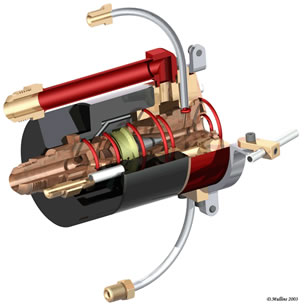 Image courtesy of IMSI/Design. |
The 3D InterOp Translator enables users to integrate advanced 3D data interoperability capabilities into software that uses 3D information; perform transparent, direct, and indirect exchange of solid, surface, and wireframe data from a variety of neutral and native 3D formats; perform exchange of semantic PMI; gain access to 3D CAD data without extensive code modification or purchase of native software applications; and reduce development time, lower maintenance costs, and improve time-to-market.
The key features of 3D InterOp Translator are geometry and topology import and an extensible translation platform for 3D applications; plug-and-play architecture for addition of new CAD formats; and transparent exchange of 3D data from a variety of neutral and native 3D formats.
How R19 Furthers PMI
Ray Bagley, Director of Product Planning & Management at Spatial Corp., describes how R19 addresses the needs of Spatial’s core areas, 3D ACIS Modeling and Interoperability: “R19 furthers our robust modeling and high-quality translation capabilities. In ACIS, a key focus was improving Local Operations (LOPs) for direct modeling applications. Spatial is committed to leading in this area, as demonstrated by the fact that the first direct modeling applications are all ACIS-based.”
“As examples, we made Remove Faces more robust with imported geometry and improved the performance of direct editing apps by optimizing faceting operations after making a model modification. We enhanced large-radius Blending/filleting capabilities so users are able to create and re-create larger fillets with greater success rate and better retention of small features (holes, bosses, ribs, etc.) that might normally be consumed by the fillet.”
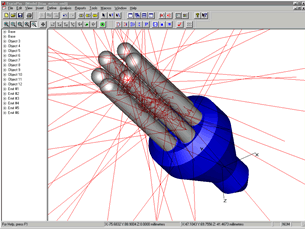 Image courtesy of Lambda. |
For production and manufacturing, Bagley speaks for Spatial, “InterOp in R19 demonstrates our commitment to providing the highest-quality B-rep translators available, and our market leadership in providing semantic PMI translation to support process automation.”
Rapid Searchability
Searchability for key areas of information is more easily available for R19 due to the improved documentation mentioned above. Now Spatial ACIS and InterOp tutorials are openly available online and in Wiki format. The new documentation includes Wiki-based technical articles with information on terms, definitions, concepts, techniques, and reference material with information on the code architecture (supplied in HTML format). Users will find the new documentation process improves searchability to readily find specific entries, ease navigation, and access new content, according to Spatial.
Evaluation Program
One spokesman whose company has been working with Spatial’s pre-release version responded favorably: “R19 includes new functionality we requested from Spatial to enhance our CMM application,” said Dr. Sang-Kyu Lee, Dukin Senior Research Engineer, NeuroMeasure. “We really appreciate the way Spatial partners with us to understand our needs and then delivers the component technology we need to meet their needs and remain ahead of our competition.”
|
The highlights of Spatial R19 were presented in a webcast this editor attended yesterday (July 29). In addition to his thoroughness in communicating specific details about the enhancements in R19, the presenter, Vivekan Iyengar, Product Manager at Spatial, verified that Spatial is working on releasing support for Wildfire 4 and has plans for the same on NX 6. Support for Inventor 2009 and SolidWorks 2009 is also planned for service packs of R19 release.
Spatial’s Related Software Component Release
In related news, Spatial also announced the availability of General Geometric Constraint Manager (GGCM), which the company describes as a next-generation, fully variational 3D constraint manager licensed from ALS Geometric Software, SA. The software component includes nonlinear equation solving technology that solves configurations in assembly management, part design, curve and surface editing, and smooth and kinematic motion simulation that the company says cannot be solved by other known methods. The 3D constraint manager offers superior solvability, performance and flexibility, is fully extensible, and suited for leading CAD/CAM/CAE applications.
For further details, visit Spatial Corp.
Read why DE’s editors chose this as a Pick of the Week.
Go directly to Spatial’s Product Documentation.
You can evaluate R19 and related components for free.
For a complete list of functionality on R19 ACIS, see its Release Notes.
See Release Notes on 3D InterOp R19‘s new functionality.
For more on Spatial Corp.‘s 3D software components, go to its Products page.
Get more details on the General Geometric Constraint Manager.
Follow these links for further information on the EDA 3D Analysis Suite, 3D Springback, and Industry Solutions.
Subscribe to our FREE magazine, FREE email newsletters or both!
Latest News
About the Author
DE’s editors contribute news and new product announcements to Digital Engineering.
Press releases may be sent to them via [email protected].







